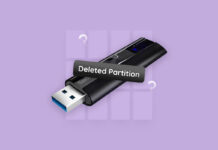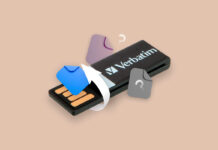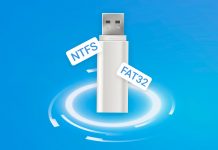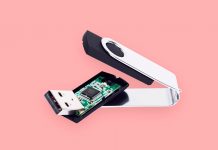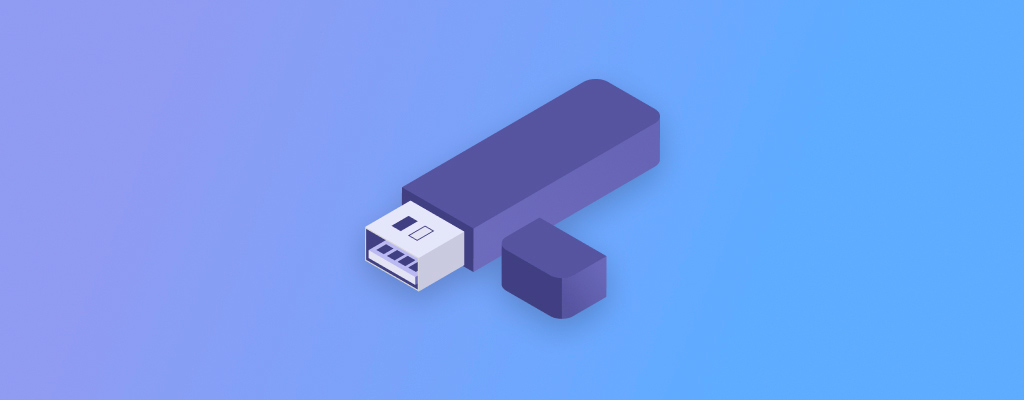
USB drives are essential devices when it comes to moving data from one computer to another. But for different reasons, data can be deleted accidentally.
Fortunately, files will still be intact on your drive until they are overwritten by new data. This means that as long as you stop using the drive after data loss, you have a good chance to unerase your files.
Table of Contents
Can Deleted Files be Recovered From a Flash Drive?
Yes, deleted files can still be recovered from a flash drive using different data recovery methods. However, the cause of the data loss will determine your chances of successfully getting your files back.
Data that is lost due to accidental deletion usually goes to the Recycle Bin first. However, on USB pen drive, files are immediately tagged as permanently deleted if you didn’t manually enabled Recycle Bin.
These permanently deleted files (due to emptying the Recycle Bin, pressing Shift+Delete for deletion, etc.) still exist but are only hidden from your system and marked as free space.
And as you use your device over time, these files will be overwritten by incoming data and internal processes. This is why it’s important to perform data retrieval using data recovery tools as soon as possible. The same can be said for other data losses caused by software issues such as data transfer interruptions, file corruptions, file system errors, and virus infections, among others.
However, data recovery for flash drives with physical damage will be especially difficult. In this case, data retrieval has lower chances of success and often requires assistance from a data recovery professional.
Try to Recover Lost Data From Your Flash Drive via Disk Drill
You don’t need to be a computer expert to successfully recover deleted USB files with Disk Drill. It provides an intuitive and user-friendly interface that simplifies the process so that users with limited computer skills can recover files by themselves.
To recover deleted files from a USB drive:
- Download and install Disk Drill on your computer. You will be asked to provide an administrator’s credentials during the installation and may need to modify some System Preferences for the software to work properly. Pop-up windows will guide you through the installation process.

- Connect the flash drive to your computer. Ensure that it is recognized by the operating system. If it is not, you may need to address the issues before proceeding. Once the flash drive is recognized, launch Disk Drill and select it in the list of available disks.
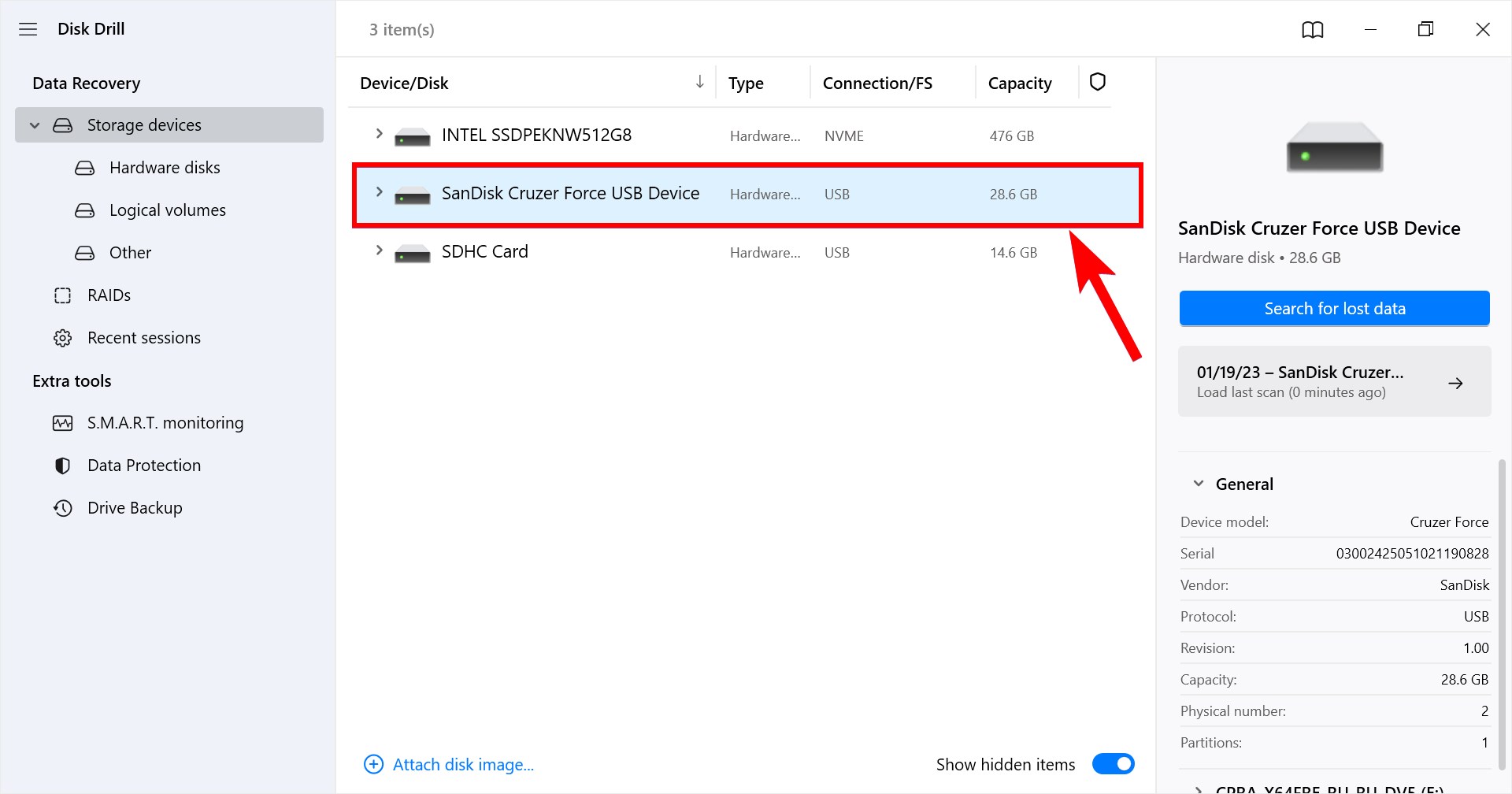
- Click the Search for lost data button to start scanning for deleted data. Disk Drill runs all of its algorithms in the preferred order.
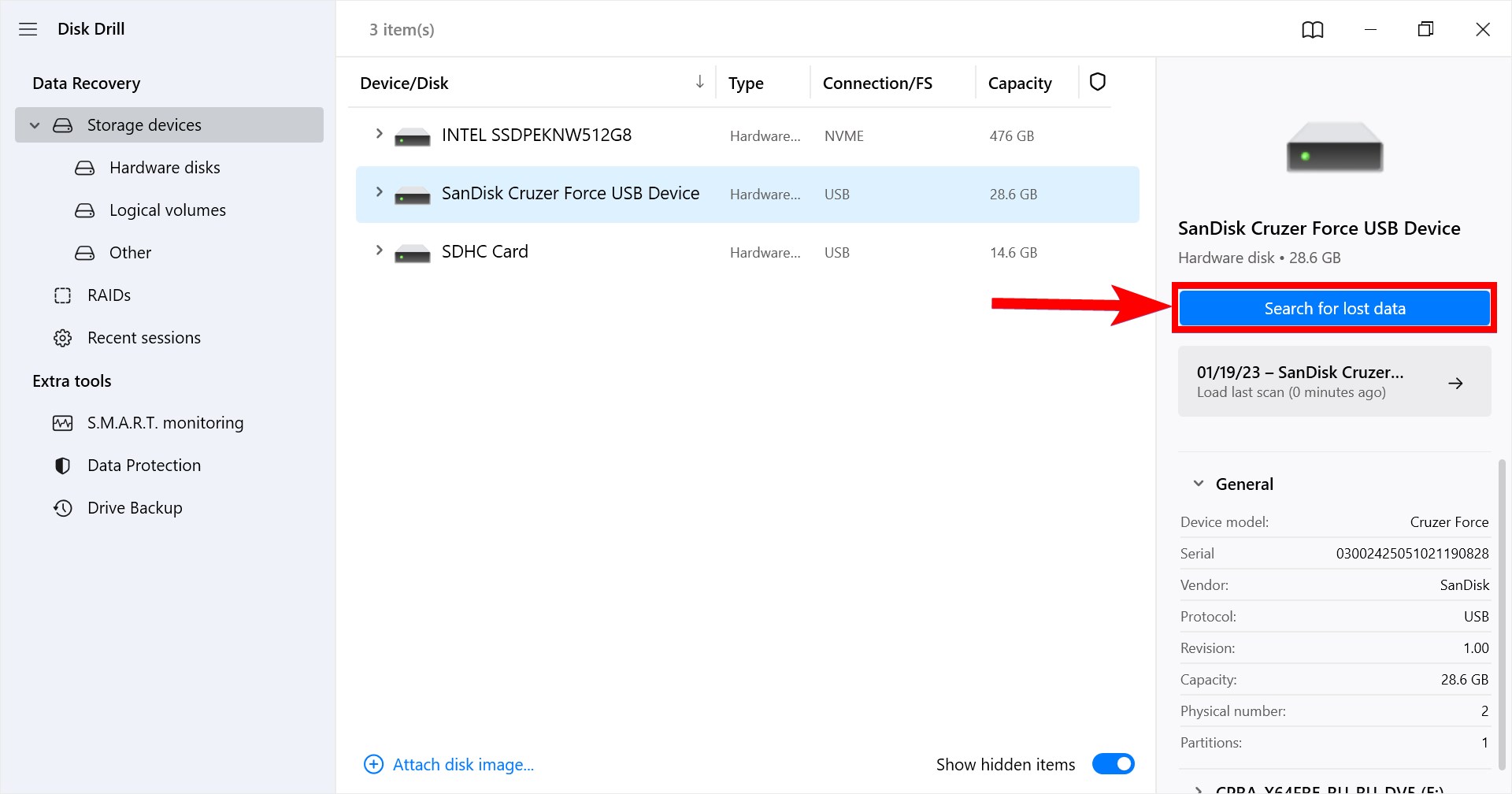
- Preview Recoverable Files. During the scanning process, the names of recovered files will be listed in the appropriate folder based on the file type. You can then preview the files in the Pictures, Video, Audio, Documents, or Archives folders to verify that they are the items you want to recover. Select the files you want to restore.
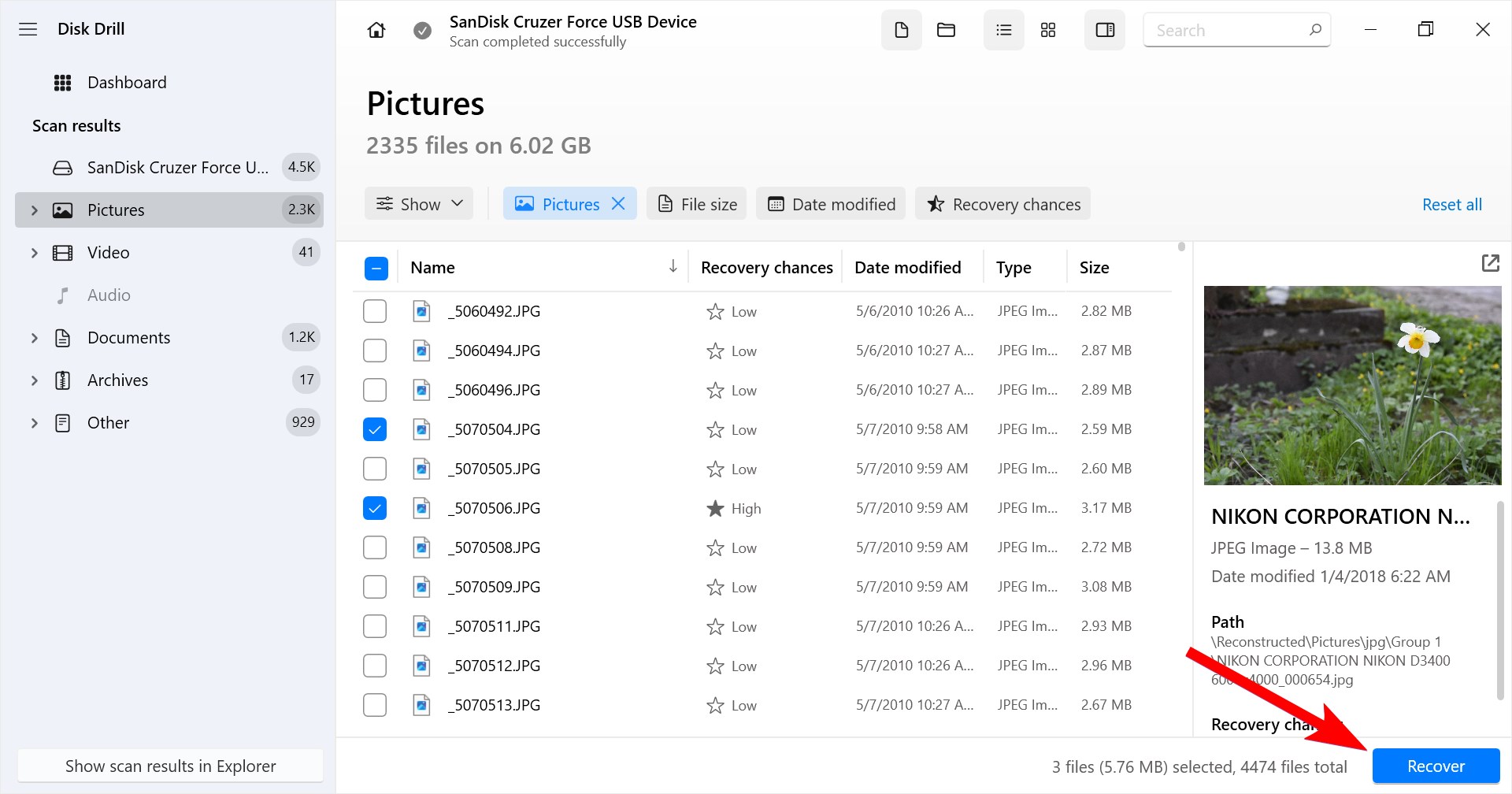
- Click the Recover button after making your selections. You will be prompted for a safe storage location where the recovered data can be saved. Don’t use the affected flash drive as this may result in corrupting or overwriting the data you wish to recover.
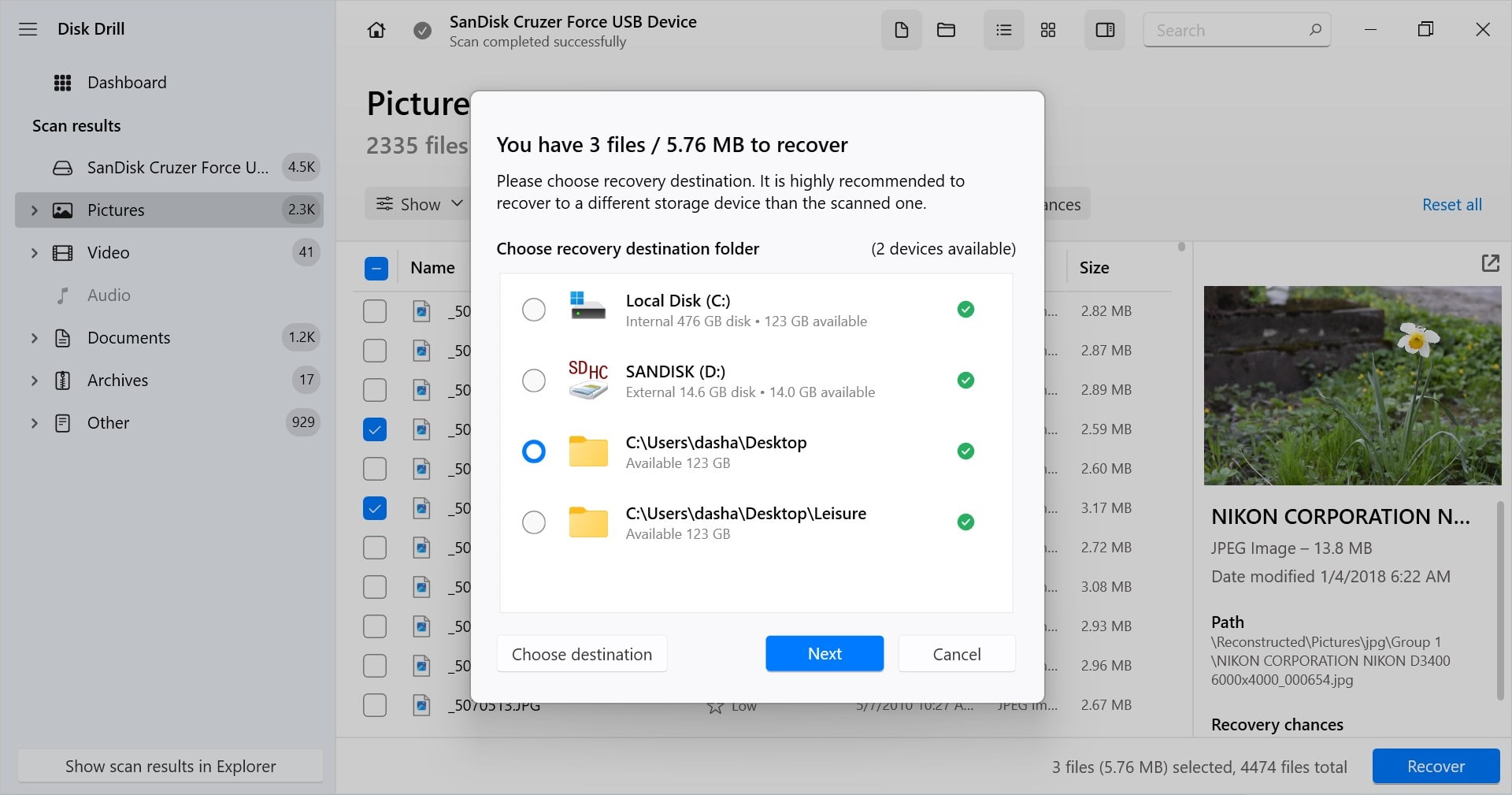
You can take advantage of the free trial version of Disk Drill which allows you to restore up to 500 MB of data without the need to upgrade the software. The free version also lets you use the data protection features of the application. It’s a great way to recover deleted files from a flash drive and see the power and utility of this valuable software tool.
How to Recover Deleted Files From Flash Drive Without Software
Chances of performing a successful recovery of files from a flash drive without software depend on how the device is being used and if you have taken the time to back it up. Most users employ flash drives as supplemental storage and do not leave them attached to their computers. This means that internal Windows tools such as System Restore and recovering from Previous Versions are not likely to be able to successfully recover deleted data from a flash drive.
Method 1:Check the Recycle Bin
External devices have their own Recycle Bin folder hidden by default. If you have enabled recicle bin on your flash drive you can access its contents either through the Recycle Bin on a desktop or from a folder on a USB drive directly.
Access your Recycle Bin folder by going to the File Explorer > File Menu > Options > View Tab > Enable Show hidden files, folders, and drives, and make sure that Hide protected operating system files (recommended) is unchecked.
Afterward, go to your flash drive’s Recycle Bin, named $RECYCLE.BIN, BIN, RECYCLER, or RECYCLED, depending on your file system. You should see your deleted files in the folder. Copy the files you want to recover to your designated location, or select the files and choose Recover.
To avoid accidentally deleting or editing other system files, make sure to enable Hide protected operating system files (Recommended) again after recovering your files.
Method 2:Recover Files From a Backup
Recovering from a backup is your best bet to recover without software. Unfortunately, many users do not take the time to back up their flash drives since they use them for portable storage. They may download the data to more permanent storage and the files may be backed up from that device. Another factor that minimizes success with this method is if the files were deleted before a backup could have been taken. Perhaps you were trying to save the files and deleted them instead.
File History is a Windows native tool for backing up and restoring your files. This replaced the Backup and Restore feature starting on Windows 8 and up
If you have turned on the File History feature on your flash drive, you can try to recover your files by doing the following:
- To get started, search for “Restore your Files with File History” in the Start Menu search feature.
- File History will open with all the folders you can recover. Choose your folders/files from the options.
- After that, click the Restore button (the green button) at the center of the bottom of the window to start the recovery process.
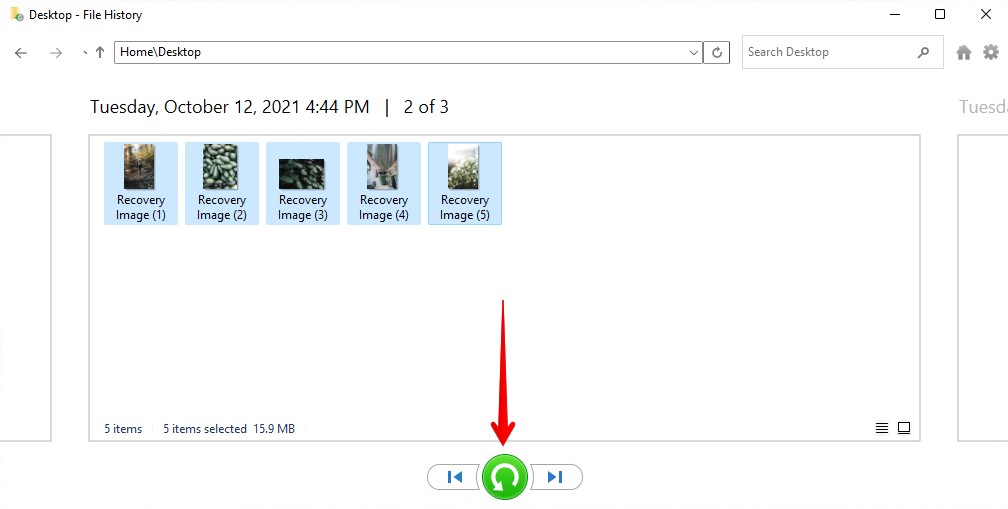
Method 3:Perform Recovery via CMD
You may be able to undelete lost data by using the attrib command. Here are the steps to try this method:
- Press the Windows and R keys to launch the Run Program.
- Type cmd and press the Enter key to open the Command Prompt.
- In the Command Prompt window, type
chkdsk H: /fand hit the Enter key (Replace H with the drive letter of the USB drive). - Use this command on your USB drive:
ATTRIB -H -R -S /S /D “drive letter”:*.*. - Hit Enter.
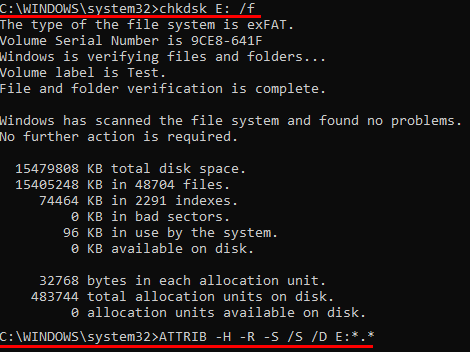
If successful, you will find files in a new folder on the USB drive. You may need to change the file extensions to make them usable with your applications.
Method 4:Engage a Data Recovery Center
In cases where the flash drive has experienced physical damage or cannot be accessed by your operating system, a data recovery center may be able to restore the lost information. These data recovery professionals use advanced hardware and software techniques to clone the damaged device so its data can be recovered. A reputable service like CleverFiles Data Recovery Center will only charge you if they can successfully recover your data.
Here are the general steps that should be followed to make use of a data recovery service.
- Contact the recovery center for an initial consultation.
- Ship the affected device to the center for a free evaluation.
- Obtain a firm estimate of the recovery price.
- Give your approval for the recovery to proceed.
- When recovery is complete, your data will be returned via new media after you settle your bill.
Ways to Prevent Accidental Data Loss from Flash Drive
Deleting a file or folder inadvertently is a common occurrence for many computer users. It can cause undue stress as the user scrambles for a way to recover the lost data. In the case of a flash drive that may hold the only copies of important photos or audio files, the loss of data can be devastating.
Some precautions can be taken to minimize the chances of data loss affecting your flash drives.
| Precaution | Description |
| 💾 Take backups of your data | This is a practice that should be followed with all of your storage devices. Having a single electronic copy of anything important is asking for trouble. If you want to protect your data, back it up! For a more convenient and automated backup process, we recommend that you use free backup software. |
| 🛡️ Take care of the device | A flash drive can easily be broken or physically damaged, making it impossible to recover the data. Taking care of your data means taking care of your devices. |
| ☣️ Steer clear of malware | Malware can be responsible for the unexplained loss of files. Keeping your system protected by an anti-virus tool will help minimize the possibility that you will be impacted by a rogue program. |
| ✋ Don’t defrag your USB device | Defragging your USB device will not do any good for it—it will not increase the performance of the drive or optimize storage. Plus, it can cause data corruption when interrupted, which leads to data loss. |
Conclusion
Losing data is never a pleasant experience. Taking the proper steps to protect your data can minimize your exposure to data loss scenarios, but there is no foolproof method of ensuring the safety of your valuable files. You may be called upon to recover data from a flash drive due to circumstances beyond your control. Data recovery software, like Disk Drill for Windows, offers the greatest chance of performing a successful recovery. Stop using the flash drive as soon as you realize data has been lost to prevent information from being overwritten, and let Disk Drill recover your files.
FAQ
- Download and install Disk Drill.
- Connect your formatted USB drive to your computer.
- Open Disk Drill and scan your device.
- Wait for the scan to finish. Choose your files on the results and click Recover.
- Choose the file destination for your files and wait for the process to finish.
